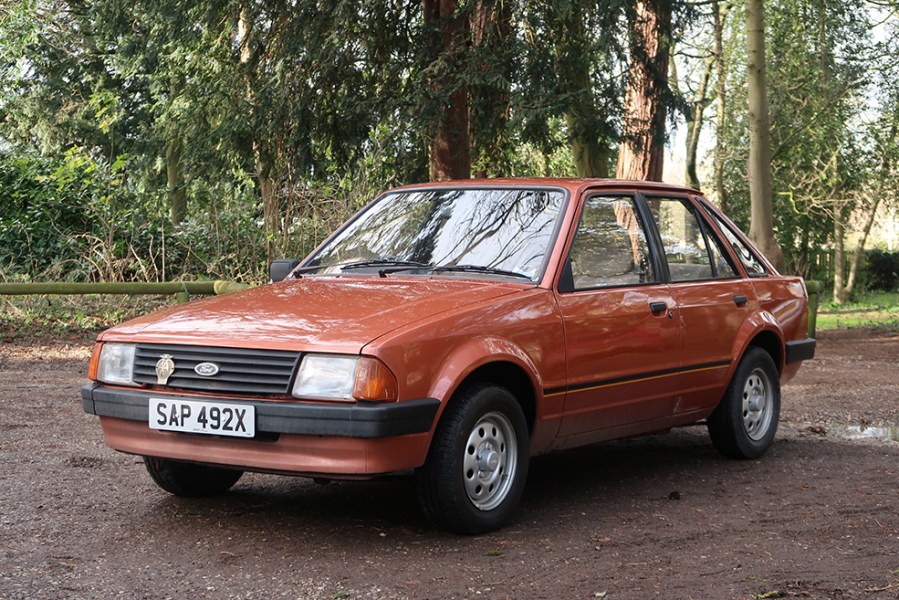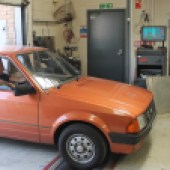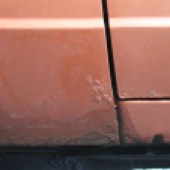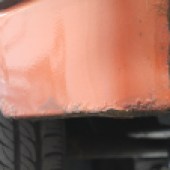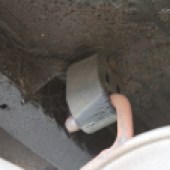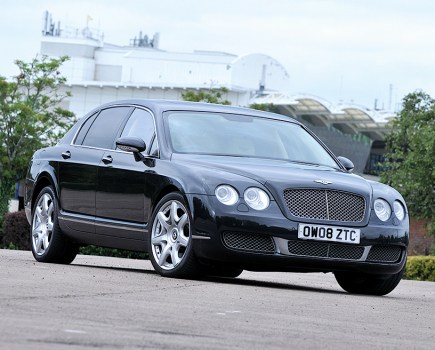With prices of Mk1 and Mk2 Ford Escorts spiralling out of reach for many enthusiasts, Classics magazine looked towards the next generation of FWD Escorts and got a Mk3 project. Aaron McKay was the lucky staffer who was responsible for fixing and improving our very own slice of 1980s Ford heaven. Here’s the Ford Escort Mk3 project part one.
When this project was first suggested, there was talk of a 1600 Ghia, but it sold before we could get to it. I’ve always had a bit of a soft spot for the Mk3 Escort Ghia’s thin wooden strips on the door cards and plush interior fabric, so I must admit I felt a pang of disappointment when I heard we’d picked up a 1.3L instead. However, after I’d taken custody of the bronze beauty, I couldn’t help falling for its modest charms, and it inexplicably took me back to a time before my own – this car is 11 years older than me, but somehow it still picks me up and places me in 1981!
Apparently it does the same thing for a surprising number of other people too, many of whom approach the car with wide, gleeful eyes and exclamations of ‘Now that’s a proper classic!’ or ‘I used to run one of those!’ And that’s just those who catch it when stationary and aren’t simply restricted to fond stares from the pavement. There is no doubt that the Mk3 Escort stirs just as many emotions as its more classically established RWD forbears.
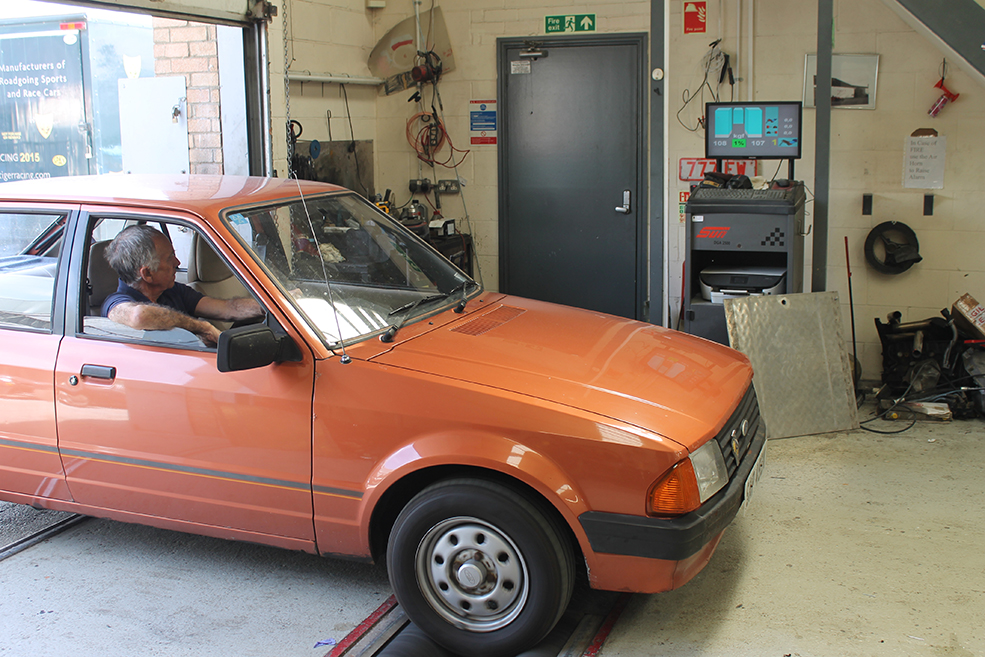
Our Escort’s braking performance impressed on the rollers, but with its history unknown and a recent spell of storage, we’ll be giving it a thorough checkover.
For those not fully acquainted with Ford’s model structure, the L is one up from the base Popular, but options were a big part of the specification for any car with the blue oval. The original buyer of ours was a little frugal when ticking the options list however, as it features headrest cushions – which aren’t that cushioning – but not much else. The lack of a near-side mirror requires extra thought when moving to the left, and the one-speaker radio only plays Smooth Radio on medium wave or the BBC World Service on long wave, all very vintage as my generation would see it.
The lack of toys, though, simply highlights how brilliant this car is for its age and our 1981 example in Celtic Bronze shines as a beacon for Ford’s competitive edge with the Mk3 Escort. It was more practical than a Golf and relatively cheap, but its key features have to be the way it looks and the way it drives. Its aerodynamic notchback shape is well proportioned and looks good regardless of spec, while inside it is a thoroughly modern and nice place to be. The one-piece dashboard is solid, the seats well shaped and covered in pleasant, multi-shade fabric, and there’s plenty of space for your mates.
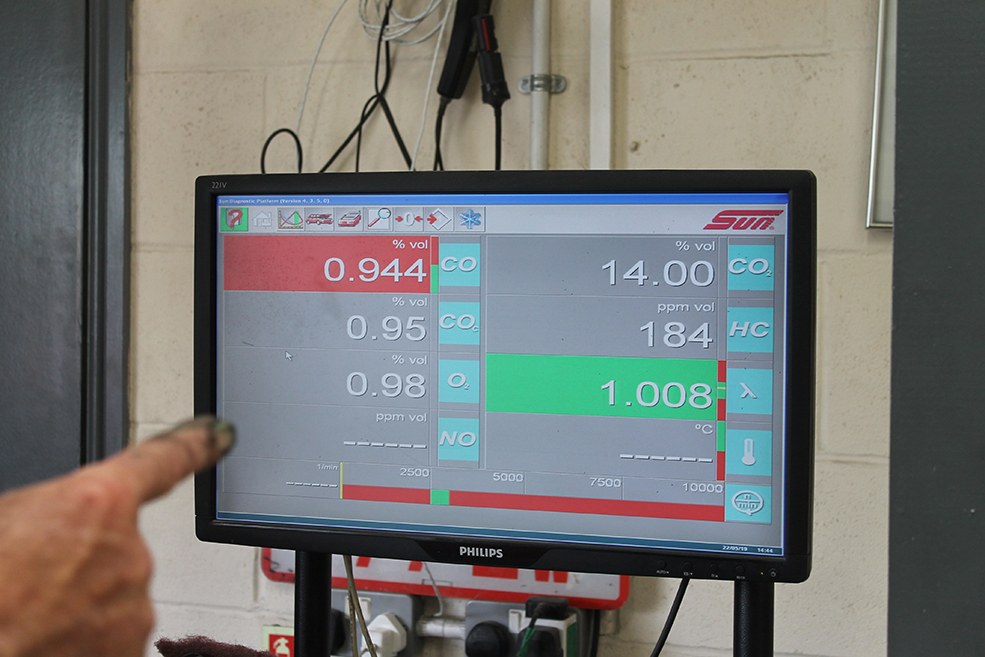
With the engine running and the exhaust gas analyser plugged in, the hydrocarbons were OK, but the CO2 reading was suspiciously low.
Even four up, the car copes impressively. Long gone were the days of compressed springs making for wayward handling, of taking out luggage for steep hills, or worrying if you can stop. Project Erika (as it was going to be called until Ford decided to stick with the Escort name) featured strong servo-assisted brakes, independent suspension all round that is well-controlled throughout its travel, and a 69bhp 1.3 CVH engine that charges forward largely undeterred by any extra weight despite its modest capacity.
In the few hundred miles that I’ve driven it, the Escort has rewarded me with impressive performance and lovely feel through its controls – that same Ford-branded sense of cohesion that makes my own Mk1 Focus so great to drive. Unfortunately, the infamous automatic choke Variable Venturi carburettor has conspired to mar the experience somewhat. My right foot has now learnt to work around the horrible dead spot in the middle of the throttle’s travel, but it still inevitably catches the otherwise smooth progress through the gears, especially around town. A simple tune could be the answer or a collapsed diaphragm could be responsible, but the choke seems to rarely find a comfortable position within its automatic motions and makes me susceptible to ideas of simply changing the whole assembly to a Weber. The other option is to refresh what bits are necessary and consider a manual choke conversion – something that Ford did themselves.

A quick tune of the carburettor enriched the mixture, bringing up the CO2 readings to a more realistic level and smoothing out the running.
For a general once over, we took it across to Tiger Racing in Wisbech, as recommended by our sister magazine Fast Ford. Even though, as Jim at Tiger pointed out while handing me a cup of tea, they tend to deal with more performance-oriented cars than our 1.3L Escort, it inspired confidence that two Mk1 Escorts were sitting to the side of the garage as I drove ours in and onto the ramp.
Up at eye level, we took a careful look around the bodywork before going underneath to look at the sills and undercarriage. Jim pointed out that our only significant bit of rust among all the little blisters is on the nearside front lower wing. This is where the moisture has built up and begun to expand outwards, and it will require attention before long – Jim predicted that in a year’s time the rust patch will be significantly larger, and a year after that bigger still, before there won’t be enough of that section left to weld to. So, we have a point for attention then. Looking along the lower door sections, there’s an opportunity to tidy up some of the more superficial bits of corrosion while we’re there and hide the join under the door trim that sits halfway up the panels.
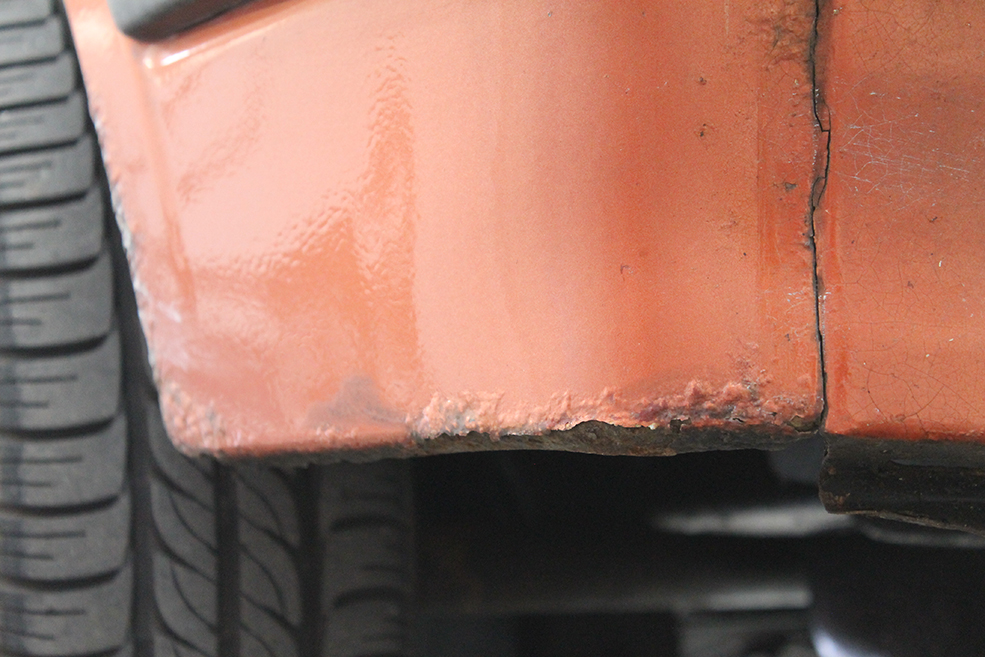
Other bits of corrosion are dotted about the bodywork, but most of those appear more superficial and none of it is too serious yet.
Next on the to-do list is the front bumper, which is in an obviously shabby state with bits of corrosion specked all over its black paint. Jim confirmed that it would be best to remove this and send it off for blasting, as there’s only so much someone can do with a wire brush
In the engine bay he went straight to the far corners by the bulkhead, saying that this is where they all go as water runs down and sits there. However, upon clearing away a few leaves and dust, we found nothing worse than some slightly dirtied paintwork. Original paintwork too, and we both agreed that it’s better to leave some imperfections on an original finish than to try and make it perfect with fresh, often not quite matching, paint. I made a note to tidy ours up with a soft brush and apply a little underseal.
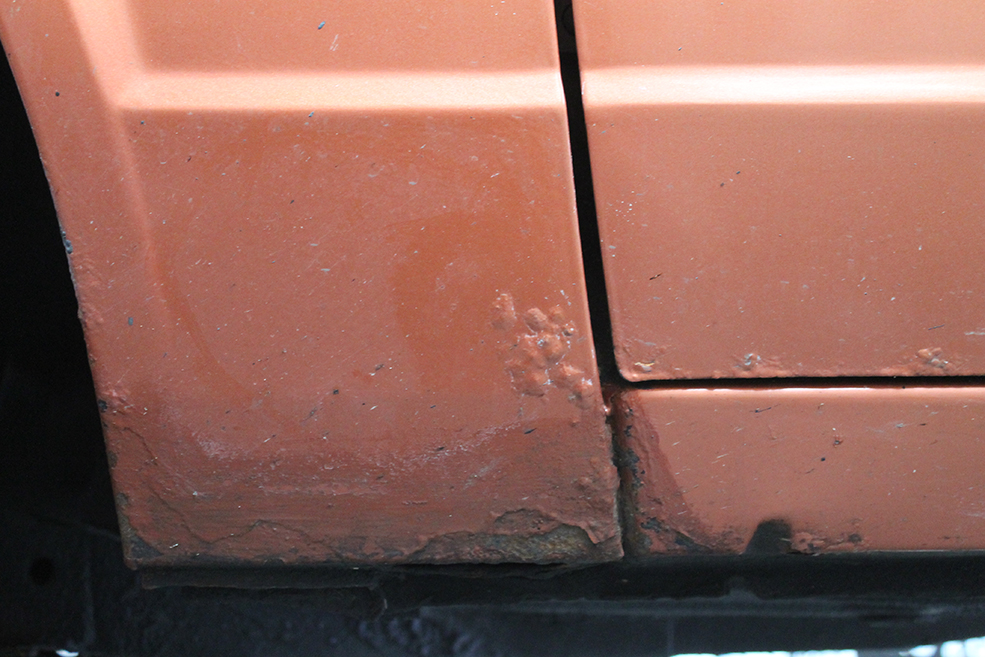
Our most serious point of rust is on the lower rear section of the nearside front wing. This section will need cutting and welding
Underneath, and with the car raised a bit higher, we immediately clocked the tidy sills, a point that many Ford owners look to. The original seam welds are present and look in remarkably good condition, and we continued to find no significant rust on the undercarriage. The exhaust had fallen at its farthest back mount, and so I put it back on while noting that the rubber hanger was looking a little old and cracked – maybe a new one of those then, but hardly a major failing!
At the front we noticed a minor oil leak, nothing out of the ordinary on a car this age and currently a point only for monitoring. The shock absorbers don’t leak though, and the rest of the suspension got the okay from Jim as we spotted only light corrosion on the spring carriers and some reassuringly new looking rubber bits. Still on a happily fruitless hunt for serious corrosion, a closer look under the wheelarches showed how tidy the inner arches are, still showing uncompromised underseal and no rust. Even at the front, where Jim says so many of these cars have suffered prangs that precipitate rust behind the leading panel of the wing and valence, it’s untouched and in excellent condition.

The exhaust appears new (it still even has the manufacturer’s label attached) but the rubber hangers have seen better days and will need changing as a priority.
In fact, ‘original’ is the word I heard most frequently from Jim, and we both agreed that it’s a rare thing to see a car of this age in such solid condition without having had more serious work done on it. So our course of action has to be to try and keep it in this original state as long as we can, while protecting it from the inevitabilities of weathering and time. Welding a bit into the nearside front lower wing section is an unavoidable necessity, but the rest is purely cosmetic and can be mitigated with less invasion.
Off the ramp, we set to on the carburettor. Jim suggested we conduct an emissions test to give us an idea of how rich (and also how clean) our 1.3 CVH is running. Our hydrocarbon reading was low and so was the CO2 reading, but that was perhaps too low – at less than 1% volume, it was far off the 4.5 limit for a car of the Escort’s age. We agreed that it must be running too lean, which lines up with its hesitation on pickup back on the throttle. A quick tweak on the allen-key adjuster and we enriched the carburettor’s running mixture, the CO2 reading going up to 2-3, and the throttle response (at least off-load) feeling sharper. That’s another thing to monitor, but our more serious issue with the engine is its oil burning, more obvious in the confines of Tiger Racing’s garage. Jim suggested valve guides or piston rings, but we won’t know until we investigate further, so a compression test is on the list.

In fact, the whole of the underside seems to be remarkably well preserved. Unusually it is the painted panels on top that appear to have been neglected more.
The final thing to check today was our braking capability, and while I’ve been happy on the road with the stopping performance – including one full-on application – it’s always good to get accurate measurements from rolling equipment. Fortunately there was more good news on that front, as the brakes proved their power and balance straight away. Jim said that our Escort had performed as well as anything they’d had in recently, with front balance across the axle being barely 1-2% out and no question that it would easily pass an MoT test.
As I’ve come to discover while driving the Escort since, the carburettor is still not entirely happy. It runs lumpy when cold and the dead spot is still unmistakably present. As Jim also suggested at the time, I think a replacement Weber is called for, bypassing the often fruitless search for issues within the infamous VV unit. However, we’ll start with a compression test before we look into taking the head off for valves, guides and an unleaded conversion while we’re at it. That should bring our running back up to standard and in line with the rest of the car’s impressive performance.
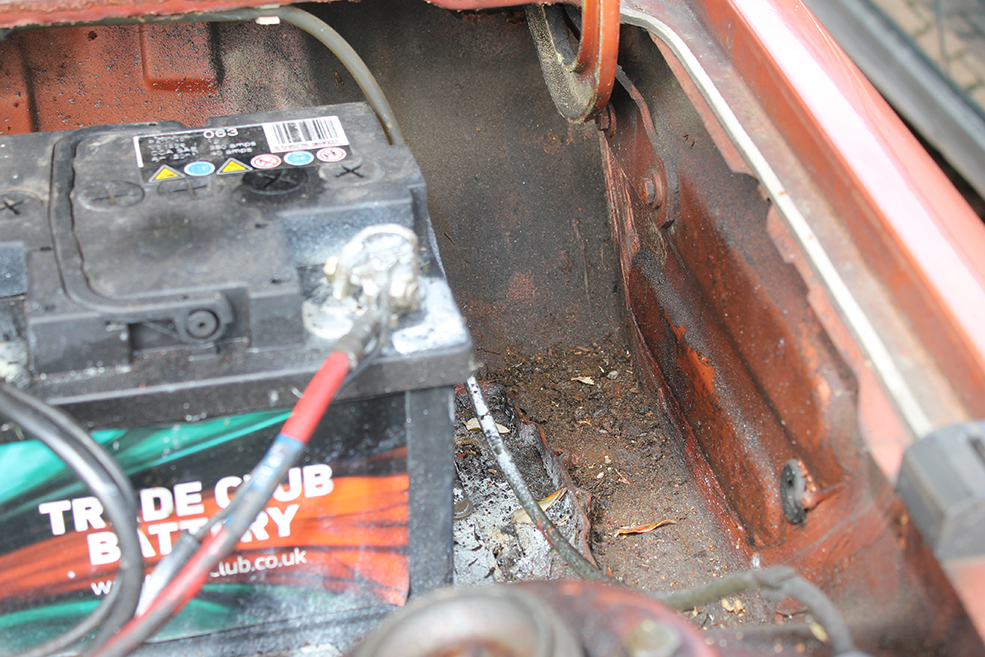
Amazingly the sills still show original seam welds and are rust-free, suggesting we have landed an unmolested example.
Considering the age of our Ford – 38 years old now – it’ll be worth looking more closely at some of the rubber parts in the cooling and braking system, particularly since I’ve seen the water temperature rise above its usual range a couple of times. Otherwise it’s a matter of working to keep our early Mk3 in its wonderfully original state, tidying up the bodywork where appropriate and making it as future proof as we can. We’ll now be getting the wheels rolling on the project, so be sure to check in with us next month when the real work will get underway!
Project taken from Classics magazine. You can watch our video review on the Escort here.

